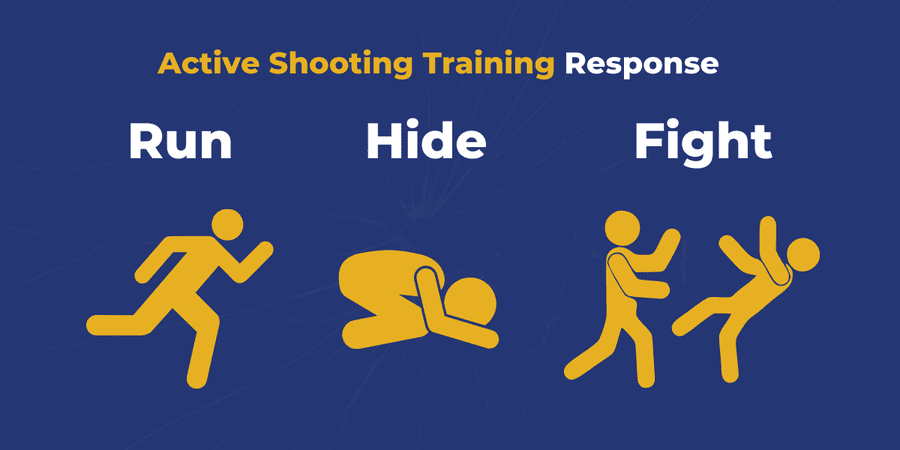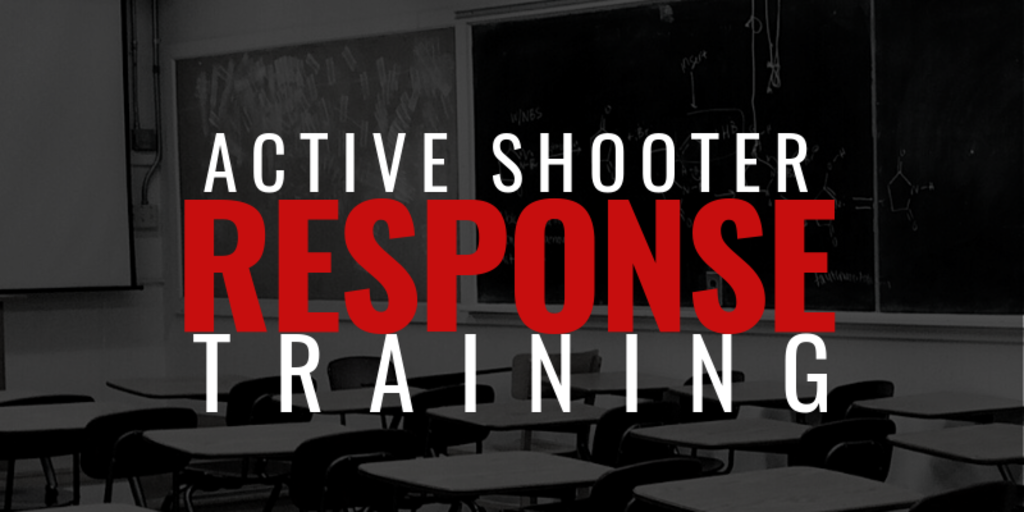Ensuring Public Security with Advanced Active Shooter Training Methods
Ensuring Public Security with Advanced Active Shooter Training Methods
Blog Article
Exploring the Key Elements and Purposes of Efficient Energetic Shooter Training Programs
Energetic shooter training programs are crucial in gearing up individuals and companies with the essential abilities to react effectively to potential threats. As we explore the intricacies of these training programs, it ends up being apparent that comprehending their thorough nature is vital to improving safety measures and response capacities.
Value of Energetic Shooter Training
Active shooter training programs are important for boosting readiness and response when faced with potential risks. These programs intend to gear up individuals, organizations, and areas with the understanding and skills essential to efficiently react to energetic shooter scenarios. The raising frequency and severity of such incidents underscore the significance of proactive procedures, as timely and enlightened actions can dramatically mitigate harm.

In addition, these programs can help reduce the stress and anxiety and concern that usually go along with conversations regarding possible risks. By giving structured guidance and useful techniques, people obtain self-confidence in their capability to respond suitably. Inevitably, the significance of active shooter training lies in its potential to save lives, minimize injuries, and grow a prepared and durable area with the ability of dealing with unforeseen challenges.
Trick Elements of Training Programs
Effective energetic shooter training programs typically incorporate several essential elements designed to prepare participants for real-world situations. The first component is detailed education on the nature of active shooter incidents, including statistics, case researches, and emotional elements that affect assailants. This academic structure is vital for cultivating awareness and understanding among individuals.
Next, programs frequently include training on personal safety and security procedures, stressing the "Run, Hide, Fight" method. Participants find out just how to assess their atmosphere, make fast decisions, and take appropriate actions throughout a crisis. Furthermore, the incorporation of effective interaction skills is important, as participants need to recognize exactly how to report events and share important info with legislation enforcement.
An additional necessary component is the participation of police or security specialists, who offer understandings into tactical responses and the significance of cooperation during a dilemma. Programs need to deal with the emotional results of an active shooter scenario, offering techniques for dealing and recuperation.
Lastly, ongoing training and correspondence course are important to guarantee that knowledge remains current and individuals feel great in their capabilities. With each other, these essential components develop an all-round training program that gears up people to react effectively to an active shooter occasion.
Realistic Situation Simulations
Practical scenario simulations are a vital element of active shooter training programs, giving participants with the possibility to take part in hands-on practice that mirrors prospective real-life situations. These simulations enhance the training experience by creating an immersive atmosphere where individuals can apply academic understanding in sensible settings.
With using role-playing, simulated situations, and specialized training official source centers, participants experience the immediate difficulties and stress factors associated with an energetic shooter occurrence. This technique of training promotes quick decision-making, synergy, and the application of safety protocols under stress. It allows -responders to create critical abilities such as situational understanding, threat analysis, and efficient discharge treatments.
Furthermore, reasonable simulations assist to recognize potential weak points in participants' reactions, making it possible for trainers to offer targeted feedback and improve general preparedness. The Homepage incorporation of differing scenarios, consisting of different places and assailant accounts, further enhances the training experience, ensuring that individuals are fully equipped to manage a variety of possible scenarios.
Inevitably, these simulations serve not only to instruct however likewise to develop self-confidence amongst individuals, promoting a sense of preparedness that is important for efficient emergency action when faced with an active shooter threat. active shooter training.
Interaction Approaches in Training
Clear interaction is vital in energetic shooter training programs, as it directly affects the effectiveness of reaction efforts during a dilemma. Training participants should understand the procedures and procedures that will assist their activities if encountered with an active shooter scenario. Establishing clear lines of interaction guarantees that all people included can relay details quickly and precisely.

Moreover, training programs should emphasize the relevance of energetic listening. Ultimately, efficient communication strategies are important for preparing people to respond emphatically click this site and cohesively in the face of an energetic shooter event.
Mental Readiness Strategies
Emotional readiness methods are progressively identified as essential parts of energetic shooter training programs. These techniques aim to outfit people with the psychological strength necessary to respond properly in high-stress scenarios. By fostering a state of mind attuned to potential dangers, individuals can much better manage worry, anxiousness, and complication throughout vital occurrences.
Key mental readiness methods consist of scenario-based training and anxiety shot exercises. Scenario-based training submerses individuals in sensible simulations that imitate the chaos of an energetic shooter occasion, permitting them to practice decision-making under stress. This exposure helps develop familiarity with emergency situation methods, improving natural feedbacks.
Anxiety vaccination involves progressive exposure to stress-inducing scenarios, allowing people to develop coping systems. This can consist of breathing workouts, visualization methods, and cognitive restructuring to reframe negative thoughts. By incorporating these strategies, training programs can cultivate a sense of confidence and control, which is crucial in dilemma circumstances.
Additionally, post-incident mental support is vital to address the emotional results of an active shooter occasion. Integrating mental health and wellness sources into training programs not only prepares people for prompt feedbacks but likewise promotes long-lasting psychological well-being, eventually contributing to a safer and much more durable setting.
Conclusion

Report this page